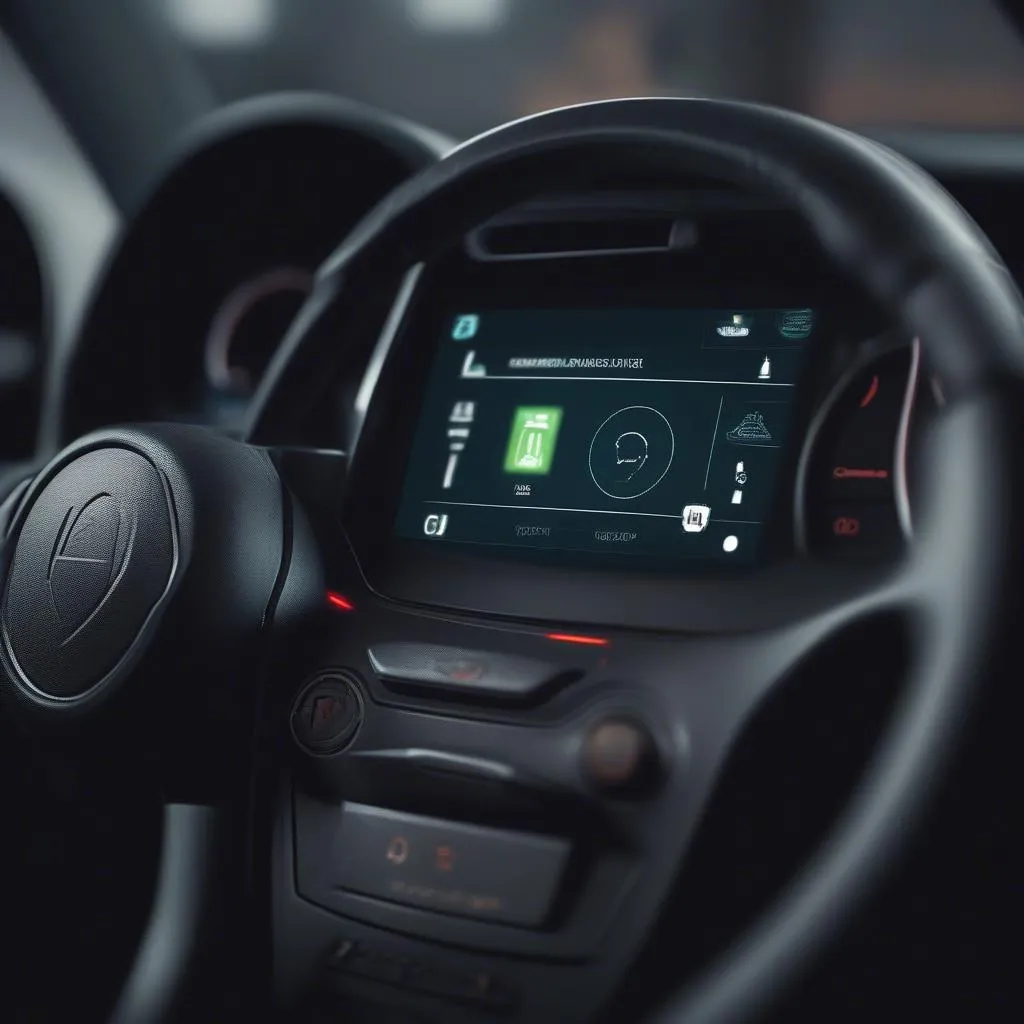Imagine this: you’re cruising down the Pacific Coast Highway, California, the sun is setting, and your favorite song is playing on the radio. Suddenly, your car sputters, the “check engine” light flashes ominously, and your heart sinks. What do you do?
This is where the magic of the OBD2 port comes in. It’s like a window into your car’s soul, allowing mechanics and even car enthusiasts to understand what’s going on under the hood. But what exactly is this mystical port, and why should you care?
The OBD2 Port: A Gateway to Your Car’s Health
The OBD2 port, short for On-Board Diagnostics, second generation, is a standardized 16-pin connector found in most cars manufactured after 1996. It’s typically located under the dashboard on the driver’s side, although the exact location may vary depending on the make and model of your car (you can usually find it in your car’s manual or with a quick online search – for example, “OBD2 port location Honda Civic 2018”). Think of it like a universal language that all modern cars speak, allowing them to communicate with diagnostic tools.
What Does the OBD2 Port Do?
This little port plays a big role in:
- Diagnostics: Mechanics use the OBD2 port to connect scanners, like the Autel OBD scanners, and access your car’s computer system. This allows them to read Diagnostic Trouble Codes (DTCs), which are like error messages that pinpoint specific issues.
- Emissions Testing: The OBD2 port is crucial for emissions testing, ensuring your car meets environmental standards.
- Performance Monitoring: Many car enthusiasts and even everyday drivers use OBD2 scanners to track their car’s performance, fuel economy, and other vital statistics.
- Customization: Advanced users can even use the OBD2 port to make minor adjustments to their car’s settings, although this is best left to professionals.
Common Questions about the OBD2 Port:
You might be wondering:
- Where is the OBD2 port in my car? As mentioned earlier, it’s usually under the dashboard on the driver’s side, but checking your car’s manual or a reliable online source like DiagXcar’s guide on OBD2 port locations is your best bet.
- What can an OBD2 scanner tell me? An OBD2 scanner can reveal a wealth of information, from engine RPM and coolant temperature to oxygen sensor readings and even if your airbags are functioning properly.
- Can I use any OBD2 scanner on my car? While most scanners work with most cars, it’s always a good idea to double-check compatibility, especially if you’re looking for advanced features or have a European car. For instance, if you need a dealer-level scanner for your BMW, you might consider something like a Dealer Scanner for European Cars.
- Can I fix my car myself using an OBD2 scanner? While you can diagnose problems yourself, fixing them often requires mechanical expertise. An OBD2 scanner is a great tool for understanding the issue, but it’s not a magic wand.
The Power of Knowledge
Understanding your car’s OBD2 port empowers you as a car owner. It allows you to communicate more effectively with mechanics, potentially saving you time and money. It also opens up a world of possibilities for those who love to tinker and monitor their car’s performance.
Beyond the Port: A Connected Car Experience
The OBD2 port is just the tip of the iceberg when it comes to car technology. With the rise of connected cars and telematics, the future holds even more exciting possibilities for diagnostics, performance optimization, and even autonomous driving.
Need help navigating the world of OBD2 and car diagnostics? Contact us on Whatsapp at +84767531508. Our team of expert mechanics is available 24/7 to assist you with any questions or issues related to diagnostic tools and software.
Looking to delve deeper into the world of OBD2? Check out these related articles:
We hope this article has shed some light on the often-overlooked OBD2 port. Don’t hesitate to reach out if you have any questions or need assistance with your car diagnostics. Happy driving!
 OBD2 Port Location
OBD2 Port Location
 Mechanic using OBD2 scanner
Mechanic using OBD2 scanner